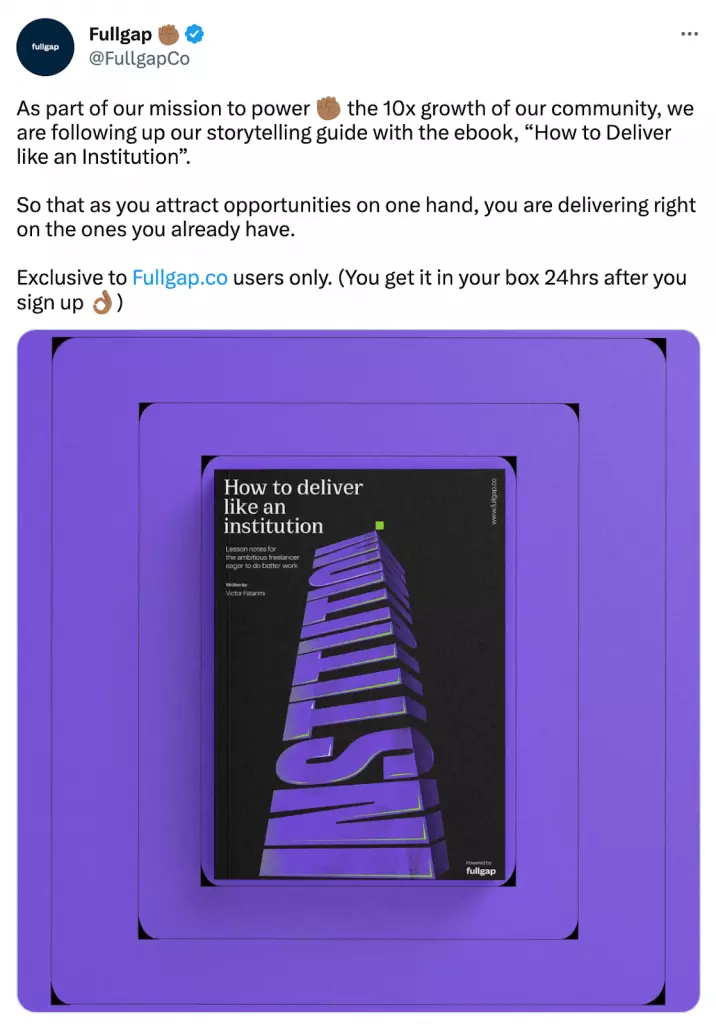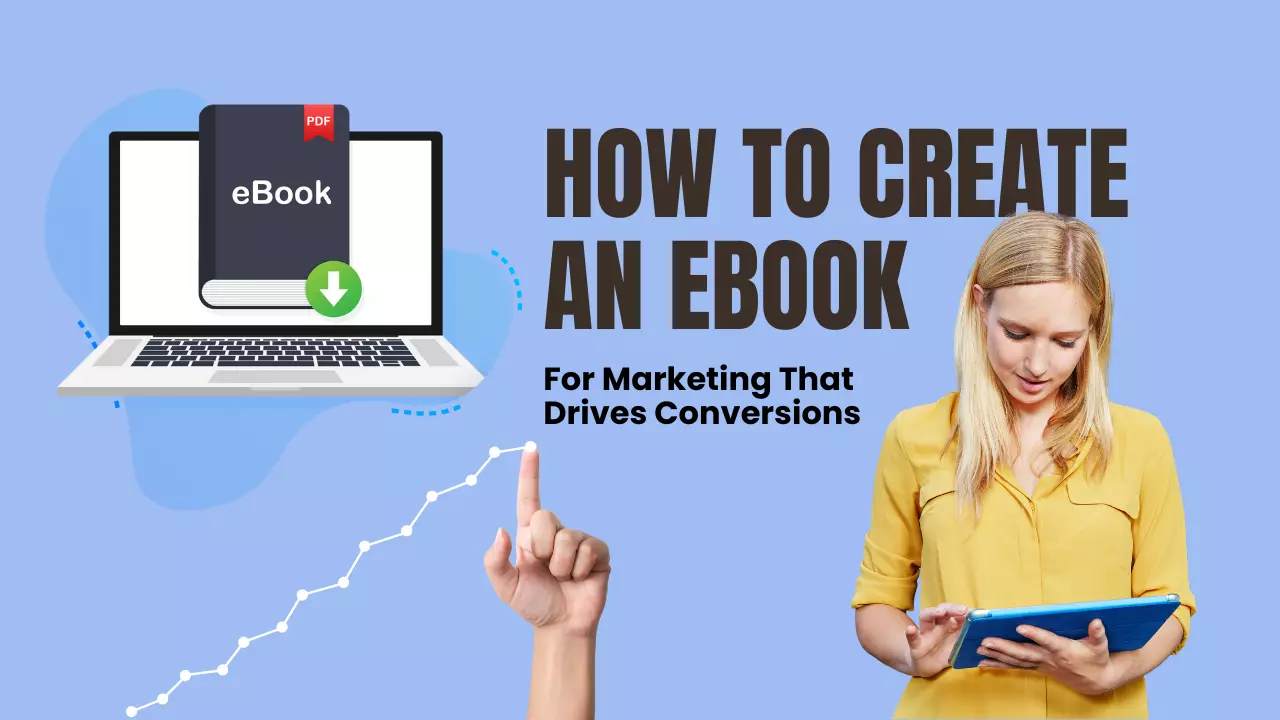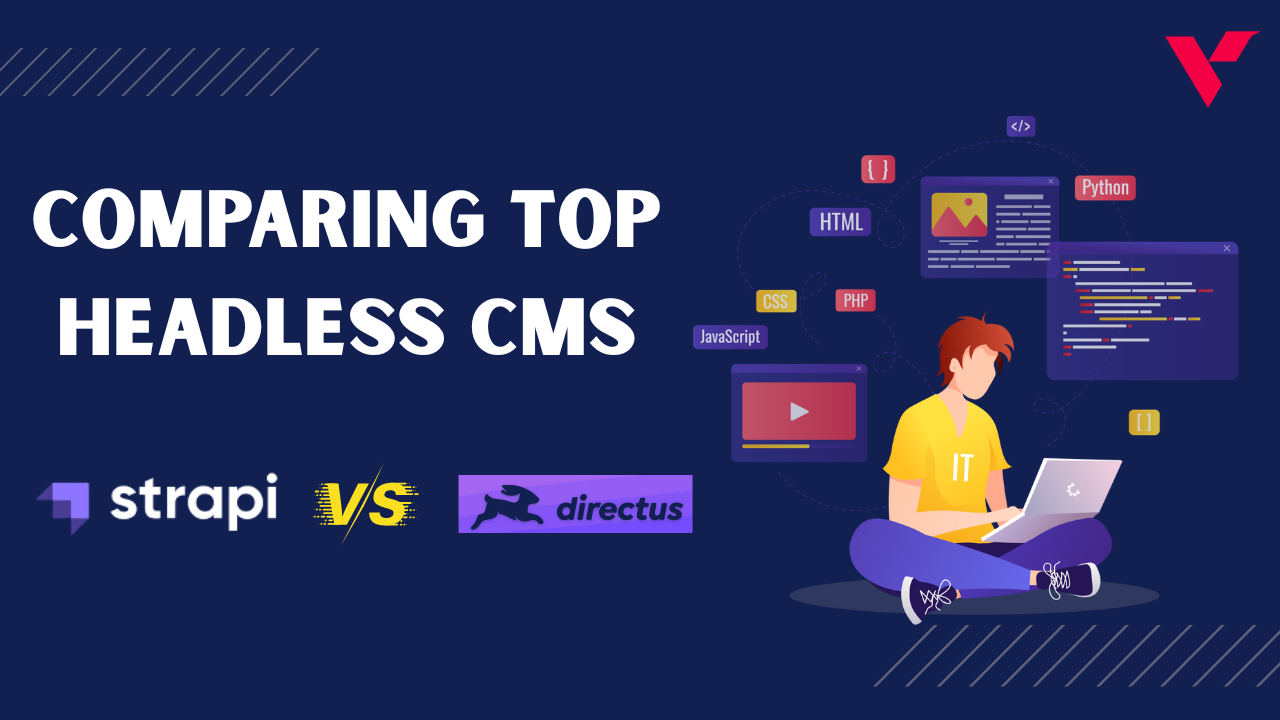Popular Tools by VOCSO
When it comes to lead magnets, there are few content approaches that can be more effective than creating and distributing your own eBook.
If your optimization strategy is on point, a good eBook can be the perfect preview for your audience, promoting your brand voice and industry expertise in a portable and sharable format.
The power of the eBook is unignorable for many marketers. In fact, as much as 43% of marketers believe that eBooks are the content assets that bring them the best results in terms of lead magnets.
This means that it’s certainly worth exploring the power of eBook marketing, and with the right strategies and tools to hand, you may find that you can win more conversions via this method without having to break the bank.
Table of Contents
How to Write an Ebook That Sells and Converts
1. Make Sure You’re Writing for the Right Audience
There’s little point in adding an eBook to your marketing strategy if you don’t know who you’re marketing to.
With this in mind, be sure to conduct sufficient research to identify your target audience. By understanding what they want to gain from your knowledge, and how they want relevant information delivered to them, you can build a functional strategy to help you structure your eBook.
While it can be tempting to create a book that teaches everyone, you’re more likely to end up with vast pages that fail to keep people engaged for long enough.
2. Choosing the Right Topic
Choosing a relevant and compelling topic for your eBook is crucial to attracting and engaging your target audience. If you don’t know how to choose the right topic for your eBooks then I will recommend conducting keyword research by using a few of the top keyword research tools. Such tools help you find relevant keywords, long tail phrases, and questions that people use to find eBooks content like yours. Let’s dive into some statistics and an example to better understand this process:
According to a study conducted by SEMrush, 73% of marketers believe that keyword research is a critical component of their SEO strategy. Furthermore, 80% of content marketers use keyword research to inform their content creation decisions. Suppose you are in the fitness industry and considering writing an eBook on “Effective Weight Loss Strategies.”
By conducting keyword research using keyword research tools like Google Keyword Planner or SEMrush, you can discover popular search terms related to weight loss, such as “best weight loss tips” or “how to lose weight fast.” These insights help validate the demand and interest in your chosen topic. If you don’t aware of keywords then I would like to recommend you to take help from a keyword research services provider.
Additionally, analyzing competitor eBooks can provide valuable inspiration. By studying successful eBooks in your niche, you can identify popular themes, unique angles, or gaps in the market that you can leverage.
Let’s say you come across a competitor eBook titled “30-Day Weight Loss Challenge: Transform Your Body.” It has received numerous positive reviews and generated significant social media buzz. This indicates that the topic of structured weight loss challenges resonates with the audience, and you can consider incorporating a similar concept into your eBook while adding your own unique spin.
Combining keyword research and competitor analysis allows you to select a topic that aligns with audience interests, has the potential for high engagement, and stands out in a competitive landscape. This strategic approach increases the likelihood of creating an eBook that captures attention, drives conversions, and achieves your marketing goals.
Choosing the right topic is an essential step in eBooks creation. According to a recent survey report, the global ebook market is projected to reach $14.38 billion in revenue in 2023. If you want to see good results from your Ebook marketing efforts then you have to give time for selecting the right topics to reach the right audience and boost sales.
3. Crafting an Engaging Title and Subheadings
Crafting a captivating title and compelling subheadings is essential to grab the attention of your audience and entice them to read your eBook. Whether you’re writing titles and subheadings for your blog or eBooks you must write something that attracts readers. If you want to read a blog title-specific guide then I would recommend reading our dedicated blog about how to write attention-grabbing blog headlines.
Let’s explore some statistics and a realistic example to illustrate the importance of this aspect:
According to a study by Copyblogger, 8 out of 10, people read headlines, but only 2 out of 10 continue reading the rest of the content. This emphasizes the significant impact of a captivating title in capturing audience interest. Furthermore, research by HubSpot indicates that using subheadings can increase content readability by 40%.
Suppose you are writing an eBook on “Social Media Marketing Strategies.” To craft a captivating title, consider using attention-grabbing words or phrases that evoke curiosity, such as “Unleash the Power of Social Media: A Complete Guide to Boost Your Brand’s Reach and Engagement.” This title highlights the benefits and promises valuable insights, compelling the audience to explore further.
When it comes to creating compelling subheadings, aim to break down your eBook’s content into digestible sections that entice readers to continue reading. For example, subheadings like “Mastering Instagram: Tips for Captivating Visual Content” or “Driving Traffic with Facebook Ads: A Step-by-Step Guide” can pique the curiosity of readers interested in specific social media platforms or strategies.
If you want to save time on thinking and finding titles or headings for your eBook then try our free title generator tool to get highly converting headlines for your content.
Using captivating language, and utilizing search keywords or terms effectively in your title and subheadings can boost SEO optimization and improve discoverability on organic search results. Remember, the title and subheadings serve as the initial hooks for your audience. By crafting them carefully, you can create a strong first impression, increase the likelihood of readers engaging with your eBook, and ultimately drive conversions.
4. Designing an Eye-Catching Cover
The importance of a visually appealing eBook cover cannot be overstated. It serves as the first impression for potential readers and plays a significant role in attracting their attention. Let’s explore some statistics and a realistic example to understand the impact of a well-designed cover:
According to a survey conducted by Blue Ribbon Panel, 80% of readers believe that a book’s cover plays a crucial role in their decision to purchase or engage with it. Furthermore, a study by The Book Smugglers revealed that books with professionally designed covers see a 50% increase in sales compared to those with unappealing or amateurish covers.
Suppose you are creating an eBook on “Digital Photography Tips for Beginners.” When designing the cover, you should consider the target audience’s preferences and the subject matter. By using vibrant colors, crisp imagery, and appropriate fonts, you can convey the essence of your eBook effectively.
For instance, you could use a captivating photograph of a camera capturing a breathtaking landscape, accompanied by bold and modern typography. This visually striking cover immediately grabs the attention of photography enthusiasts and suggests that your eBook offers valuable insights and guidance.
Designing a professional cover doesn’t necessarily require a large budget. Here are some tips to create an eye-catching cover on a budget:
Utilize royalty-free or affordable stock images: Websites like Unsplash or Shutterstock offer high-quality images that can enhance your cover without breaking the bank.
Choose colors wisely: Research color psychology and select colors that evoke the desired emotions or associations related to your eBook’s topic. Tools like Adobe Color can help you create harmonious color schemes.
Opt for free or low-cost design tools: Utilize graphic design software like Canva or GIMP, which offer pre-designed templates and intuitive interfaces to create professional-looking covers.
Seek feedback: Share your cover design with friends, colleagues, or online communities to gather feedback and make necessary improvements. Honest opinions can help you refine the design and ensure it resonates with your target audience.
By considering the importance of an eye-catching cover, utilizing appropriate design elements, and implementing budget-friendly strategies, you can create a visually appealing eBook cover that entices potential readers and increases the chances of engagement and conversions.
5. Adopt a Consistent Tone
Your tone will flow throughout your eBook and will be closely aligned with your brand identity. This means that using the right tone is extremely important.
When it comes to tone, you can shape the style of the book you want around your adopted style. For instance, do you want your eBook to be a rich, industry-leading guide for B2B clients? Or a more lighthearted overview of the state of your industry for casual readers?
If you want to be positioned as a more approachable and accessible business, it could be worth utilizing an informal tone, while more prestigious endeavors could align a more formal tone with their identity.
6. Use a Suitable Design
Now we can begin to get to the exciting part. Selecting the design of your eBook can be an enjoyable process, and can be handcrafted to perfectly accentuate your brand’s style.
For the many of us who aren’t naturals in graphic design, there are plenty of free and paid-for options when it comes to designing a visually engaging eBook, and one great tool can be the vast library of brochures offered by platforms like Powered Template.
As Powered Template’s intuitive suite of more than editable 3,500 designs shows, there can be a suitable option for a large range of purposes, and you’ll be well-positioned to visually appeal to your audience while providing them with valuable content.
7. Remember to be the Voice of Your Brand
At their best, eBooks have the power to give your brand a far greater reach and to act as an extension of the company itself.
This means that it’s an opportunity for a CEO or founder to position themselves as a thought leader for their industry, and an impactful eBook can help to build their own voice as synonymous with their brand.
With this in mind, it’s imperative that your content is accurate and relevant, and that you can be regarded as a person to trust for industry-specific insights. Although this doesn’t mean that you should avoid incorporating external viewpoints, be sure to add your perspectives to the topics covered in a way that adds value.
8. Adding Interactive Elements
Adding interactive elements to your eBook can significantly enhance reader engagement and improve the overall user experience. Here are some statistics and examples that highlight the effectiveness of incorporating interactive features:
Hyperlinks and Bookmarks:
eBooks with well-placed hyperlinks can increase reader engagement and click-through rates. By including hyperlinks within your eBook, you can provide additional resources, references, or external links that readers can explore for more information. This interactive feature allows readers to delve deeper into specific topics and enhances their overall reading experience.
Interactive Quizzes, Surveys, or Assessments:
Incorporating quizzes or assessments in eBooks can lead to higher reader retention rates and increased interactivity. Imagine you have written an eBook about digital marketing strategies. You can include interactive quizzes throughout the eBook to test readers’ knowledge and help them gauge their understanding of the concepts. This interactive element not only keeps readers actively engaged but also provides valuable feedback on their comprehension.
Multimedia Elements (Videos or Audio Clips):
eBooks that include multimedia elements, such as videos or audio clips, have been shown to increase reader engagement and comprehension. Suppose you are creating an eBook on fitness and nutrition. Including video demonstrations of exercise routines or audio clips of expert interviews can greatly enhance the learning experience for readers. They can visually or audibly grasp the concepts and techniques being discussed, making the eBook more interactive and informative.
By incorporating these interactive elements, you can make your eBook more dynamic and engaging, thereby increasing the chances of reader retention, satisfaction, and ultimately, conversions.
9. Optimizing for Search Engines
Search engine optimization (SEO) plays a crucial role in ensuring your eBook reaches a wider audience and ranks well in search engine results. By implementing SEO best practices, you can increase the visibility and discoverability of your eBook. Here are some stats and examples to illustrate the importance of optimizing your eBook for search engines:
According to a study by BrightEdge, organic search drives 53% of all website traffic, making it a valuable source for eBook discovery.
Research from Search Engine Journal shows that 75% of users never scroll past the first page of search results, highlighting the significance of ranking higher.
Let’s say you have written an eBook titled “The Ultimate Guide to Social Media Marketing.” By optimizing your eBook for search engines, you can increase its chances of appearing in relevant search queries. Here’s how:
Meta Tags: Craft compelling meta tags, such as the meta title and meta description, that accurately summarize the content of your eBook. For instance:
Meta Title: “The Ultimate Guide to Social Media Marketing: Boost Your Online Presence”
Meta Description: “Learn proven strategies to enhance your social media marketing efforts and reach a wider audience. Download our comprehensive eBook for expert insights and actionable tips.”
Titles and Headings: Incorporate relevant keywords in your eBook’s titles and headings. For example:
Chapter Title: “Utilizing Instagram Marketing: Strategies for Business Growth”
Subheading: “Mastering Facebook Ads: Targeting the Right Audience for Maximum Engagement”
Keyword Placement: Include relevant keywords throughout the eBook in a natural and meaningful way. For instance, if your eBook is about social media marketing, you may include keywords like “social media strategy,” “social media engagement,” or “social media analytics” in the content.
Optimizing your eBook for search engines enhances its visibility, increases organic traffic, and improves the chances of attracting a larger audience interested in your topic. By incorporating SEO best practices, you can maximize the reach and impact of your eBook on your marketing strategy and conversions.
10. Designing a Conversion-Focused Landing Page
According to a study conducted by HubSpot, companies with optimized landing pages have a 55% increase in lead generation. Additionally, businesses that increase the number of landing pages from 10 to 15 see a 55% increase in leads.
Let’s say you’re a marketing agency offering an eBook titled “The Ultimate Guide to Social Media Marketing.” To design a conversion-focused landing page, you need to consider the following:
Showcasing eBook’s Value: Highlight the key benefits and unique selling points of your eBook, such as “Learn proven strategies to grow your social media presence and drive targeted traffic.”
Crafting Compelling Copy: Write persuasive and engaging copy that clearly communicates the value proposition of your eBook. For example, “Unlock the secrets of social media success with our comprehensive guide that will transform your business.”
Persuasive CTAs: Create clear and compelling call-to-action buttons that encourage visitors to take action. Use action-oriented phrases like “Download Now” or “Get Your Free Copy.”
Optimizing for Lead Capture: Incorporate a lead capture form, where visitors can enter their contact information in exchange for the eBook. Keep the form simple, requesting only essential information like name and email address.
By implementing these strategies, you can increase the conversion rate of your landing page, capturing more leads and potential customers for your eBook.
11. Promote Your eBook Accordingly
Now it’s time to get promoting your eBook. There are many avenues that can be taken to ensure that your book gets the exposure it deserves, but social media typically stands above the rest as an excellent resource.

To effectively advertise your eBook, be sure to position it as a valuable resource for your target audience. To do this, you could add teasers from inside the content, run giveaways to followers who retweet your post or create banners to advertise it across different networks.
Another great way of promoting your eBook can be through video marketing. With 92% of online marketers claiming that video is a key facet of their efforts, it can be an attention-grabbing means of bringing more promotion to an eBook.
What should you include in a video promoting your eBook? Take a look at your sales page for inspiration. This way you can cover the key benefits and highlights of your book in more detail, and make accurate forecasts about exactly what your audience will take away from reading your book.
By creating an eBook, you can add a piece of evergreen content to your marketing repertoire, and gain an asset that could sweeten the deal on any potential conversions or mailing list sign-ups.
Whatever the purpose of your eBook, it can be another great means of extending your branding beyond the confines of a webpage and social media and can help to generate more leads through reading value-adding content.
With the right blend of insight, tone of voice, and engaging content, your eBook can not only inspire more users to make a decisive action with your business, but it can also become a valuable resource that can be utilized to win more customers long into the future.
Final Words
Building an eBook to bolster your marketing strategy and win more conversions doesn’t have to be a daunting task, especially when you’re working on a budget. In this ultimate guide, we have explored every aspect of eBook creation, from understanding your audience and choosing the right topic to craft compelling content, designing a conversion-focused landing page, and promoting your eBook effectively.
By following the strategies outlined in this guide, you can create an eBook that not only captures the attention of your target audience but also drives conversions and boosts your marketing efforts. Remember to conduct thorough research, write engaging content, and design an appealing cover and landing page that showcases the value of your eBook.
Furthermore, don’t underestimate the power of repurposing your eBook content and leveraging user feedback and testimonials to enhance your marketing efforts. Continuously track and analyze the performance of your eBook, measuring its impact on conversions and return on investment.
With the right approach, an eBook can serve as a valuable tool in your marketing arsenal, helping you establish authority in your industry, generate leads, and ultimately drive business growth. So, go ahead and start building your eBook today, and witness the positive impact it can have on your marketing strategy.
Remember, success may require iterations and adjustments along the way. Stay open to feedback, embrace continuous improvement, and adapt your eBook to the ever-evolving needs of your audience and market. Good luck on your eBook journey, and may it supercharge your marketing strategy for unparalleled success!



















